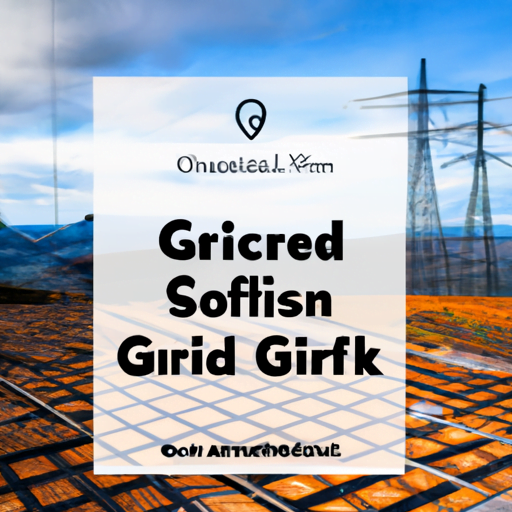Have you ever wondered where the safest place to live off the grid is? Perhaps you’re considering a life away from the hustle and bustle of modern society, and are searching for the ideal location to build your own self-sustaining oasis. Well, in this article, we will explore the concept of off-grid living and dive into the topic of finding the safest location for such a lifestyle.
Living off the grid means relying on alternative sources for electricity, water, and other basic necessities, often without any connection to public utilities. It can be an appealing lifestyle for those seeking simplicity, self-sufficiency, and a closer connection to nature. However, safety considerations shouldn’t be overlooked when choosing an off-grid location.
In order to find the safest off-grid living location, there are several factors to consider. First and foremost, it’s crucial to assess the risk of natural disasters such as earthquakes, hurricanes, or wildfires. Researching historical data and consulting with local authorities can provide valuable insights into the likelihood and severity of these events in a given area. Additionally, proximity to healthcare facilities, availability of emergency services, and the overall crime rate should also be taken into account. So, let’s delve deeper into these considerations and help you make an informed decision on where to establish your off-grid haven.

Finding the Safest Off-Grid Living Location
Off-grid living has become an increasingly popular lifestyle choice for those seeking independence and sustainability. However, it is essential to carefully choose the location where you will establish your off-grid home. Factors such as climate, access to healthcare, natural disasters, availability of natural resources, and security and crime rates need to be considered to ensure your safety and well-being. In this article, we will explore the different types of off-grid living locations and their advantages, as well as important factors to assess when choosing the safest off-grid living location.
Different Types of Off-Grid Living Locations
When considering off-grid living, there are various types of locations to choose from, each with its own unique advantages and challenges. Let’s explore some of them:
Mountainous Regions
Living in mountainous regions offers numerous benefits for off-grid enthusiasts. Firstly, the clean and fresh air found in these areas is invigorating and promotes better overall health. Additionally, mountainous regions often have an abundance of wildlife, providing ample opportunities for outdoor activities such as hiking, fishing, and wildlife photography. Another advantage of living in the mountains is the natural barriers they provide, which can enhance security and privacy for off-grid dwellers.
Coastal Areas
Coastal areas are another popular choice for off-grid living. One of the primary advantages of living by the coast is the access to marine resources, such as fish and seaweed, which can supplement your food sources. Additionally, coastal areas often benefit from a moderate climate, with milder temperatures and fewer extremes compared to inland locations. The proximity to the sea also opens up the potential for alternative energy sources, such as offshore wind or wave power. Moreover, the scenic views and relaxing atmosphere of coastal areas provide a unique and tranquil living experience.
Rural Farmland
For those seeking self-sustainability and a closer connection to nature, rural farmland can be an ideal off-grid living location. The wide open spaces and privacy found in these areas allow individuals to live harmoniously with the land, growing their own food and raising animals. Rural farmland also tends to foster supportive and tight-knit communities, where neighbors often rely on each other for resources and assistance. The opportunity for agriculture and livestock production is plentiful, making it easier for off-grid dwellers to become self-sufficient.
Desert Landscapes
Although living in desert landscapes may present certain challenges, it can also offer unique advantages for those embracing the off-grid lifestyle. The most obvious benefit is the potential for solar energy generation, as deserts receive abundant sunlight throughout the year. This makes it easier to rely on renewable energy sources and reduce reliance on conventional power grids. The relatively lower cost of land in desert areas is another advantage worth considering. However, it is important to manage water resources efficiently due to minimal rainfall in these regions. Despite the arid conditions, desert landscapes are home to unique ecosystems and diverse wildlife, offering memorable experiences for nature enthusiasts.

Important Factors to Assess Climate and Weather
When choosing an off-grid living location, it is crucial to assess the climate and weather conditions of the area. Here are some important factors to consider:
Temperature Range and Extremes
Understanding the temperature range and extremes in a particular location is essential for evaluating comfort and energy requirements. Extreme heat or cold can significantly impact your day-to-day living and may require additional heating or cooling solutions.
Rainfall and Precipitation Patterns
Assessing the rainfall and precipitation patterns is crucial for determining the availability of water resources. Sufficient rainfall is vital for off-grid living, especially if you plan on cultivating crops or raising livestock.
Severity and Frequency of Storms
Some regions are prone to severe storms, such as hurricanes or cyclones, which can pose significant risks to off-grid homes. Understanding the severity and frequency of these storms is essential for preparedness and ensuring your safety.
Seasonal Variations
Consider the seasonal variations in your chosen location, as they can affect the availability of natural resources and impact the design and construction of your off-grid home. Understanding these variations will help you plan accordingly and optimize your living experience.
Considerations for Natural Disasters in Off-Grid Living
Living off-grid requires careful consideration of potential natural disasters in the chosen location. Here are some common natural disasters to take into account:
Earthquakes
Certain areas are prone to earthquakes, and it is essential to evaluate the seismic activity in the region. Proper construction techniques and materials should be employed to ensure the structural integrity of your off-grid home.
Hurricanes and Cyclones
If you choose a coastal area, it is crucial to be aware of the likelihood of hurricanes or cyclones in the region. Implementing storm-resistant design features and securing your property can mitigate potential damages.
Wildfires
Living in areas with a high risk of wildfires requires advanced planning, including creating defensible space around your property and implementing fire-resistant construction techniques.
Floods
Understanding the flood risk in your chosen location is vital to ensure the safety of your off-grid home. Proper land elevation, flood-resistant construction, and flood management strategies should be considered.
Access to Healthcare in Remote Off-Grid Locations
Living off-grid often means being remote or isolated from medical facilities. Here are some considerations for healthcare access:
Proximity to Medical Facilities
Evaluate the distance and accessibility to the nearest medical facilities. In case of emergencies, quick access to medical assistance can be life-saving.
Emergency Medical Services
Research the availability of emergency medical services in the area, such as paramedics or air ambulances. Prompt emergency response can make a significant difference in critical situations.
Availability of Medication and Supplies
Ensure that essential medications and medical supplies are accessible in your chosen location. Stocking up on necessary supplies beforehand can prevent potential healthcare emergencies.
Healthcare Infrastructure
Gauge the quality of healthcare infrastructure in the surrounding area. Consider factors such as available doctors, hospitals, clinics, and the general accessibility and affordability of healthcare services.
Conclusion
Choosing the safest off-grid living location requires careful consideration of multiple factors. Climate and weather conditions, natural disasters, access to healthcare, availability of natural resources, and security and crime rates all play a crucial role in ensuring your safety and well-being while living off-grid. By assessing these factors and understanding the advantages and challenges of different types of off-grid living locations, you can make an informed decision and find the perfect place to embrace the off-grid lifestyle. Whether it’s the fresh air and clean water of mountainous regions, the marine resources and moderate climate of coastal areas, the self-sustainability of rural farmland, or the potential for solar energy in desert landscapes, your off-grid living experience can be both safe and fulfilling.




